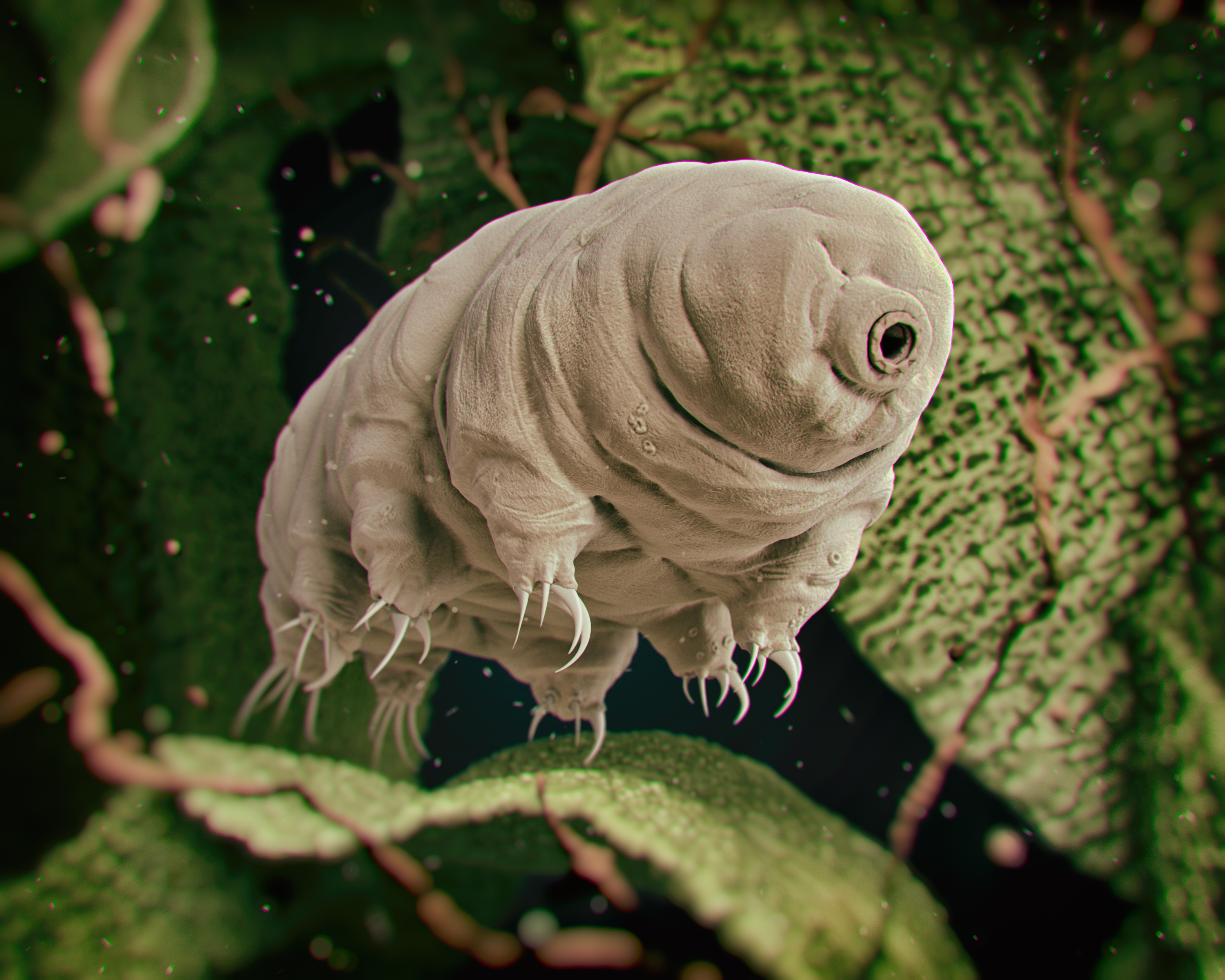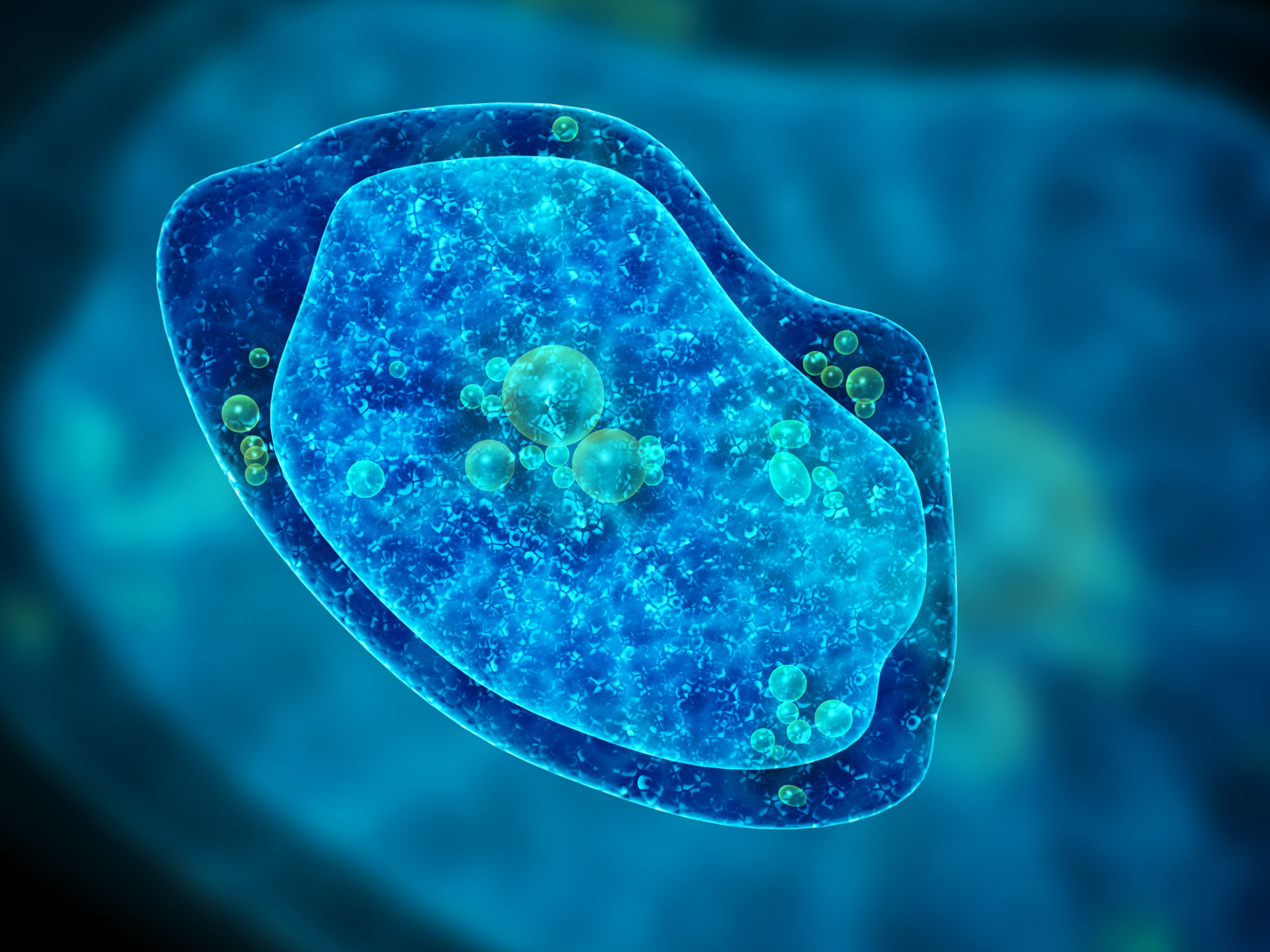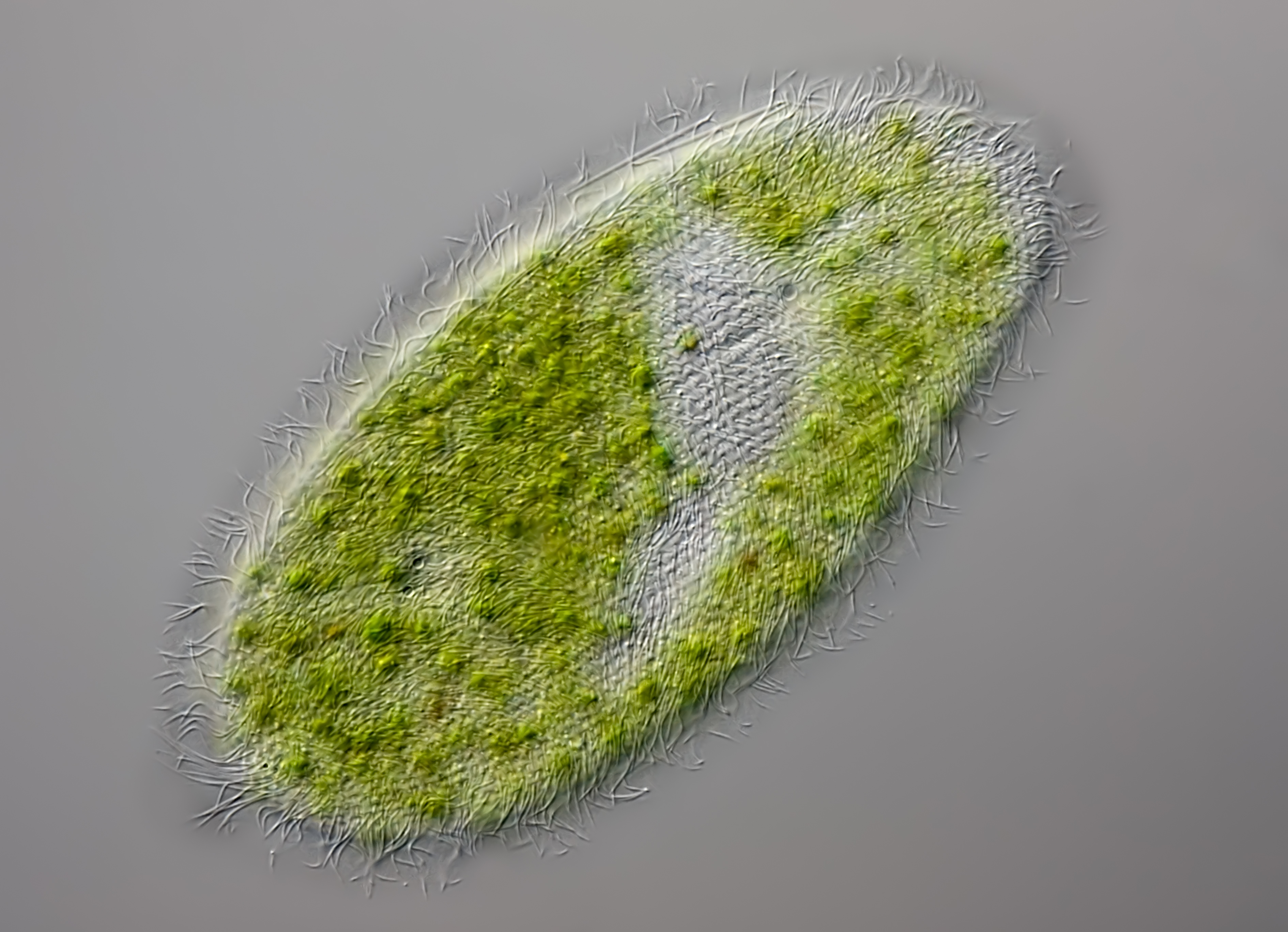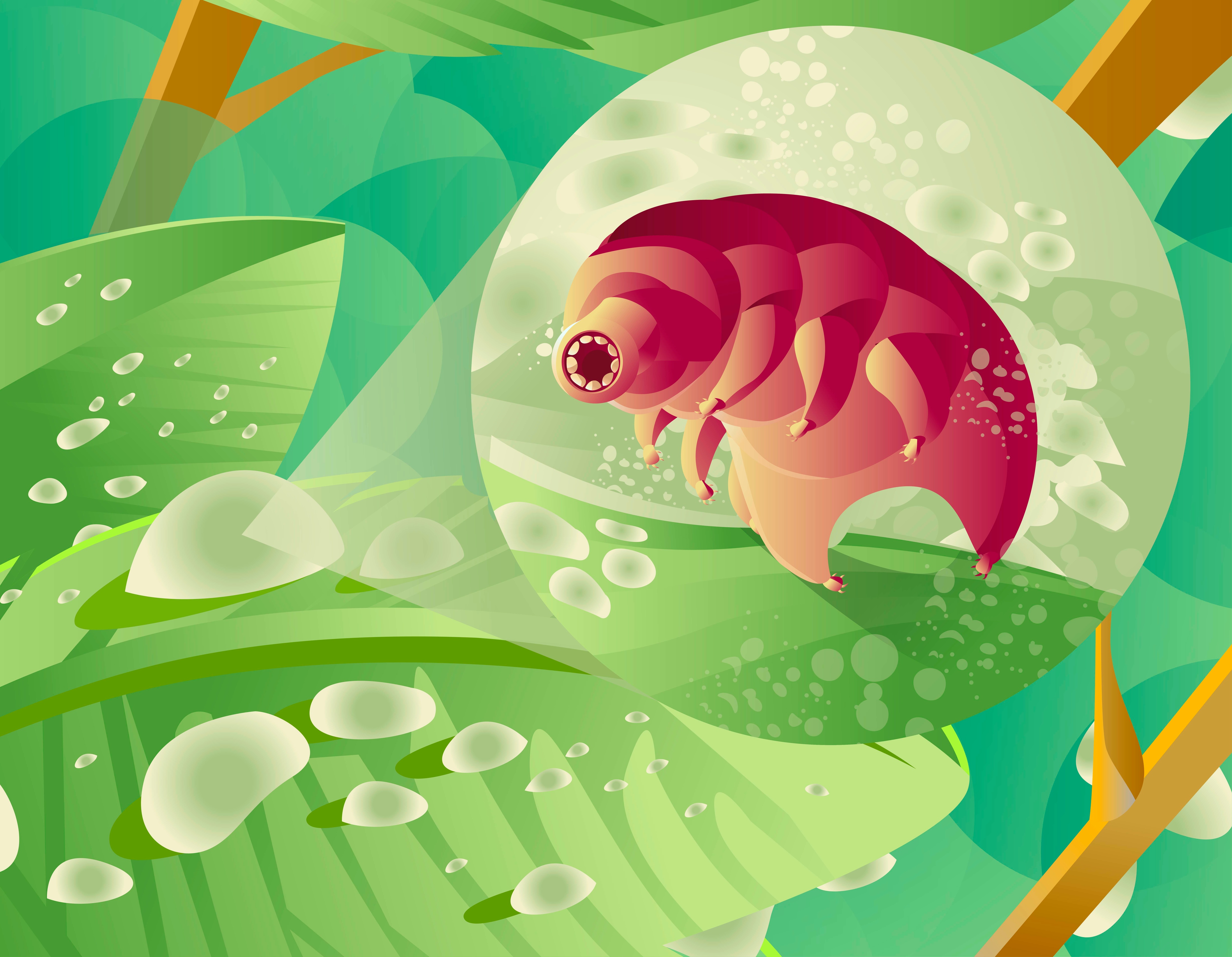Amazing Microscopic Creatures
Tardigrades

These tiny creatures are also known as water bears and can be found in moss, lichens, and leaf litter. They are known for their extreme durability, for their adorable appearance, and their slow movements.
Awesome Water Bear facts:
They are incredibly resilient: Tardigrades are known for their ability to survive in extreme conditions that would kill most other creatures. They can withstand temperatures as low as -458°F and as high as 302°F, and they can survive for decades without water or food.
They can survive in space!!! Tardigrades have been shown to survive in the vacuum of space, as well as exposure to radiation and extreme temperatures. This means they could possibly survive on other planets, making them one of the most fascinating creatures for astrobiologists to study.
They can go into a state of suspended animation: When conditions become unfavorable, tardigrades can enter a state of suspended animation called cryptobiosis. In this state, they can survive for years without water or oxygen, and then come back to life when conditions improve.
They have an unusual appearance: Tardigrades are tiny creatures, typically only about 0.5mm long, and they have a distinctive appearance with eight legs and a plump body. They are also covered in a protective cuticle (like a waxy shell) that helps them survive in harsh environments.
Diatoms

These are tiny single-celled algae that live in freshwater and saltwater. These microscopic organisms are incredibly important for the health of our planet's ecosystems. They are responsible for producing up to 40% of the oxygen we breathe! How? During photosynthesis, diatoms take in carbon dioxide and water, and use energy from the sun to turn them into glucose (sugar) and oxygen. The oxygen they produce is released back into the water, and some of it also goes into the air where we can breathe it in!
Diatoms are also important sources of food for other organisms in aquatic ecosystems. They form the base of the food chain for many aquatic animals, including fish and whales.
But maybe the most amazing thing about diatoms is their intricate and beautiful cell walls, which are made of silica and have intricate designs that are unique to each species. The patterns on these cell walls are so intricate that they have inspired artists and scientists alike.
Euglena

These tiny creatures are actually a type of algae that live in freshwater. They have an eye-like structure that helps them detect light, and they can use this to swim towards the sun for energy, just like a plant. But wait, there's more! Euglena can also eat other tiny organisms, like bacteria. This makes them unique because they can either produce their own food through photosynthesis, or they can hunt for their dinner. How cool is that?!
Amoeba

Amoebas are amazing microscopic creatures that can be found all around us! They are single-celled organisms that come in many different shapes and sizes. One of the coolest things about amoebas is that they move and eat using their pseudopods, which are like little arms that can extend and retract to help them grab onto their food. This makes them look like they are constantly changing shape!
Another awesome thing about amoebas is that they can be found in all sorts of environments, from soil and water to even the insides of animals! Some species of amoebas even glow in the dark!!
Amoebas are also very important for the ecosystem because they are decomposers. This means that they break down dead plants and animals and recycle their nutrients back into the environment. Without amoebas, our world would be much less clean!
Overall, amoebas are incredible creatures that are fascinating to observe and learn about. From their unique shape-shifting abilities to their important role in the environment, there's no doubt that amoebas are truly awesome!
Rotifers

Rotifers are amazing microscopic creatures that live in freshwater and sometimes even in saltwater! These little animals are called "wheel animals" because they have a ring of tiny, hair-like structures that move like a wheel, allowing them to move quickly and easily through the water. But that's not all - rotifers are also super strong, able to withstand extreme temperatures, pressure, and even radiation!
Another awesome thing about rotifers is that they reproduce in a unique way. Some rotifers can produce eggs that don't need to be fertilized by males, which means they can reproduce even when there are no males around.
But the coolest thing about rotifers is their ability to survive in harsh environments. Some species can survive for years without water, and then "come back to life" when they are rehydrated. How cool is that?! Overall, these tiny wheel animals may be small, but they are mighty!
Volvox

Volvox appear like little green balls that move and spin around in water. They are actually a type of algae, but they look and act like tiny animals!
Volvox are made up of many small cells that work together as a team to move around and survive. They have little tails called flagella that help them swim, and they even have little eyespots that can sense light.
But the most amazing thing about Volvox is that they sometimes live by themselves, but other times they can join together with other Volvox to make a big colony! The colony can even have different types of cells that work together to help the whole group survive.
If you look at Volvox under a microscope, you'll see that they are beautiful and complex creatures that are fascinating to watch.
Paramecium

Paramecium are one of the most common and fascinating creatures you can observe under a microscope! These tiny single-celled organisms are shaped like a slipper and swim around using tiny hair-like structures called cilia. They can be found in ponds, lakes, and other freshwater environments.
What's really cool about Paramecium is that they have two nuclei - one controls the cell's functions, while the other is used for reproduction. They can also regenerate and repair themselves if they are damaged.
But that's not all - Paramecium are also important in the food chain as they are a source of food for other microorganisms and even small fish. They even have a special defense mechanism where they can release tiny pellets called trichocysts to ward off predators.
So if you want to witness an incredible display of life under a microscope, take a look at a Paramecium and be amazed by their tiny but mighty world!
Vorticella

Vorticella is an amazing microscopic creature that looks like a tiny trumpet-shaped flower! It is a type of protozoa that lives in freshwater environments.
Vorticella is unique because of the way it moves. It uses a long and slender stalk to attach itself to objects in the water. When it wants to move, it coils and uncoils the stalk like a spring, which allows it to quickly dart around in the water.
Its feeding method is also super interesting. It has tiny hair-like structures called cilia that create a vortex of water, which brings food particles towards its mouth. This is like having a built-in straw to help it eat!
In addition, Vorticella has a unique way of defending itself from danger. When it is threatened, it can quickly contract its stalk, which pulls its trumpet-shaped body out of harm's way. This is like a retractable shield that helps keep it safe from predators.
Overall, Vorticella is an amazing creature that demonstrates incredible abilities in movement, feeding, and defense!
Stentor

Stentor is an amazing microscopic creature that is super cool! It's shaped like a trumpet and is one of the biggest protozoans out there! Stentor can regenerate if it gets cut in half, making it a real-life superhero! It also has a long, hairy tail, called a contractile stalk, which it uses to attach itself to plants or other surfaces.
And it has more than one superpower: it can stretch its body up to 10 times its length! That's like stretching your body from one side of the room to the other side!
Stentor is found in freshwater environments, such as ponds or streams, and can often be seen attached to the underside of water plants. It's super cool to observe under a microscope, and you can learn so much about this incredible creature. If you're lucky enough to spot Stentor, you're in for a real treat!
Radiolarians

Radiolarians look like they come from outer space! These tiny creatures are single-celled organisms that have intricate skeletons made of silica, which makes them shimmer and sparkle like jewels. They come in all shapes and sizes, from spiky spheres to delicate snowflakes. And if you thought tardigrades were tough, radiolarians are just as amazing! Some species of radiolarians can survive in the depths of the ocean, where they endure extreme pressure and temperatures.
If you want to observe radiolarians, you'll need a microscope and some ocean water. These creatures are found all over the world, from the surface of the ocean to the depths of the abyss. In fact, radiolarians are one of the most abundant groups of plankton in the ocean. They're an important part of the marine food chain, providing food for larger animals like big fish and whales!
So, grab your microscope and head outside to find some of these amazing creatures. Who knows what other microscopic wonders you might discover along the way!
